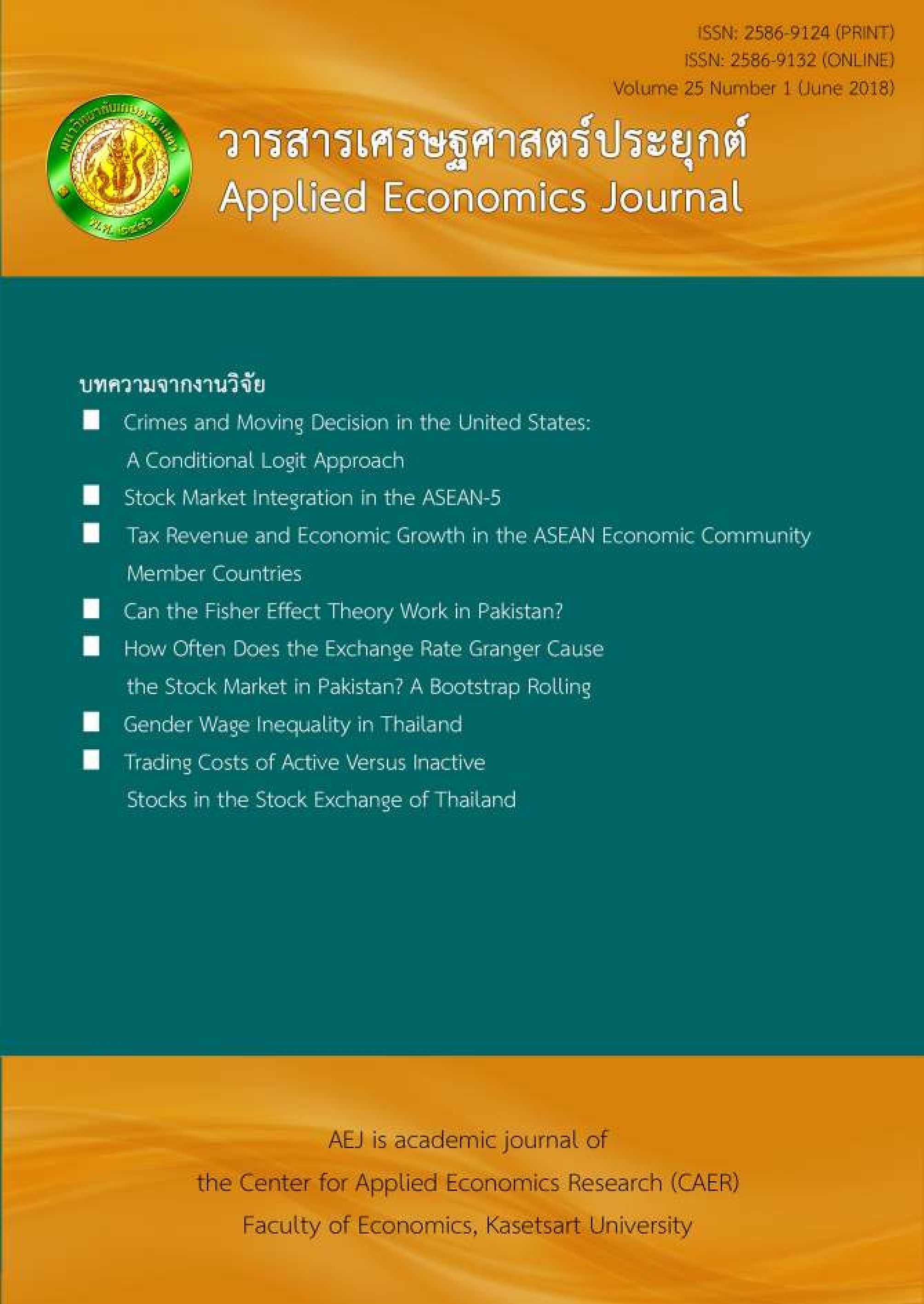Crimes and Moving Decision in the United States: A Conditional Logit Approach
Main Article Content
Abstract
This paper examines the relationship between crime and an individual’s decision to migrate to another state. The study is based in the United States and spans from 2011 to 2015. The samples used in this study are interstate migrants. The findings reveal that the ratios of violent and property crimes between the origin and the destination are associated with migration. The study finds that higher number of violent crime at the destination discourages migrants to move out of their original state. However, people tend to move out although it has a higher number of property crime at the destination state. The different perceptions of crime severity between violent and property crimes may have an impact on individual’s decision to migrate. The study also investigates the heterogeneity of individual’s characteristics and their migration decision. The results reveal that migrants’ concern about crime does not depend on age, education level, or income level.
Article Details
The paper is published under CC BY-NC-ND, in which the article is freely downloaded and shared in its original form non-commercially and its citation details are identified.

